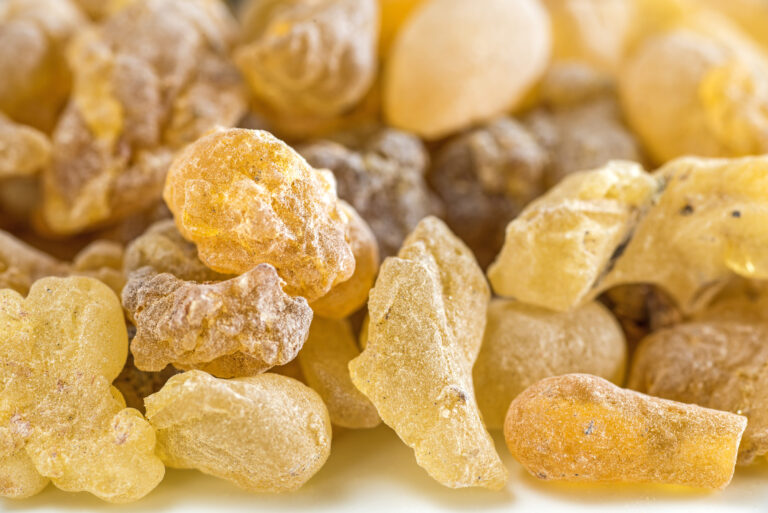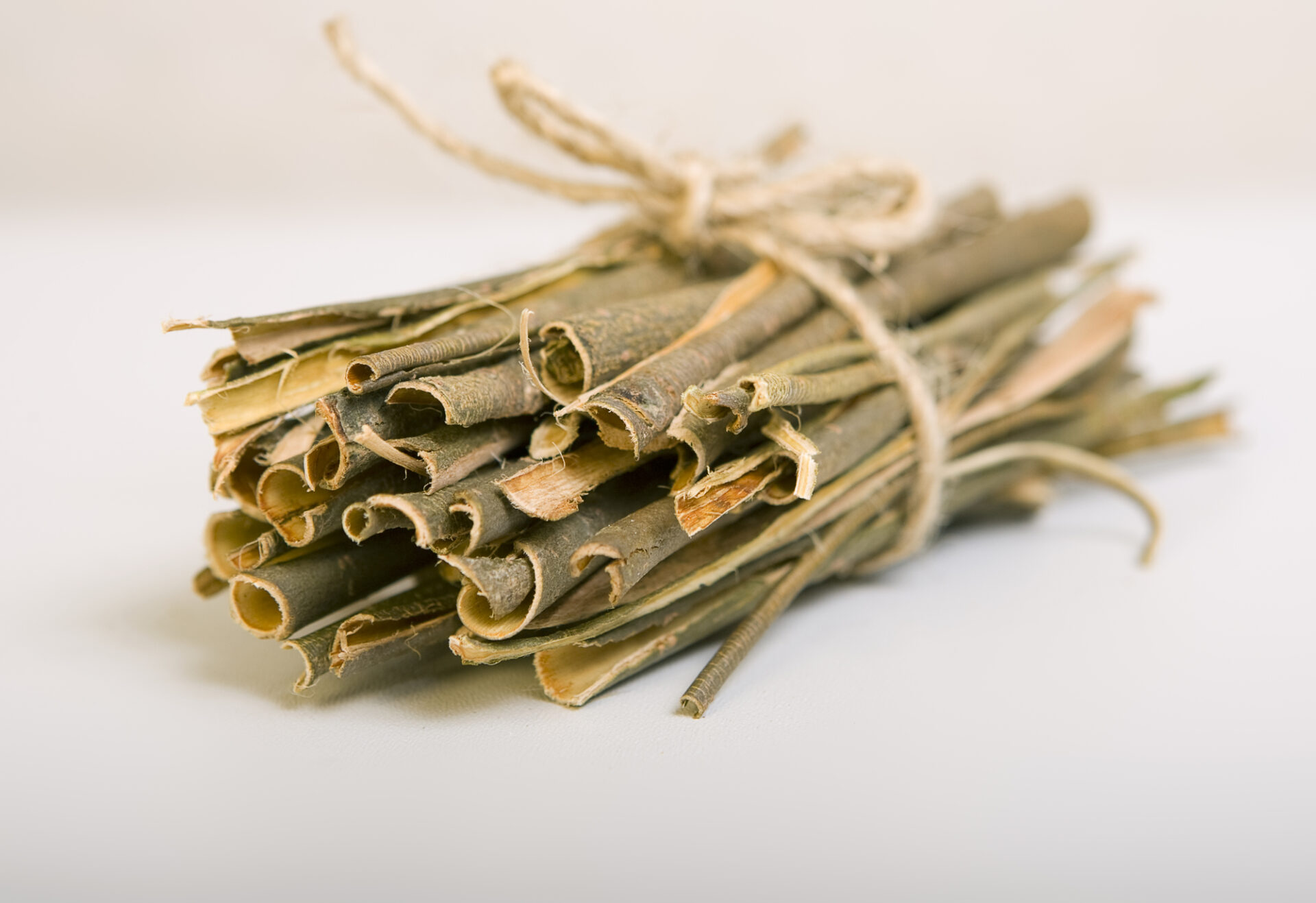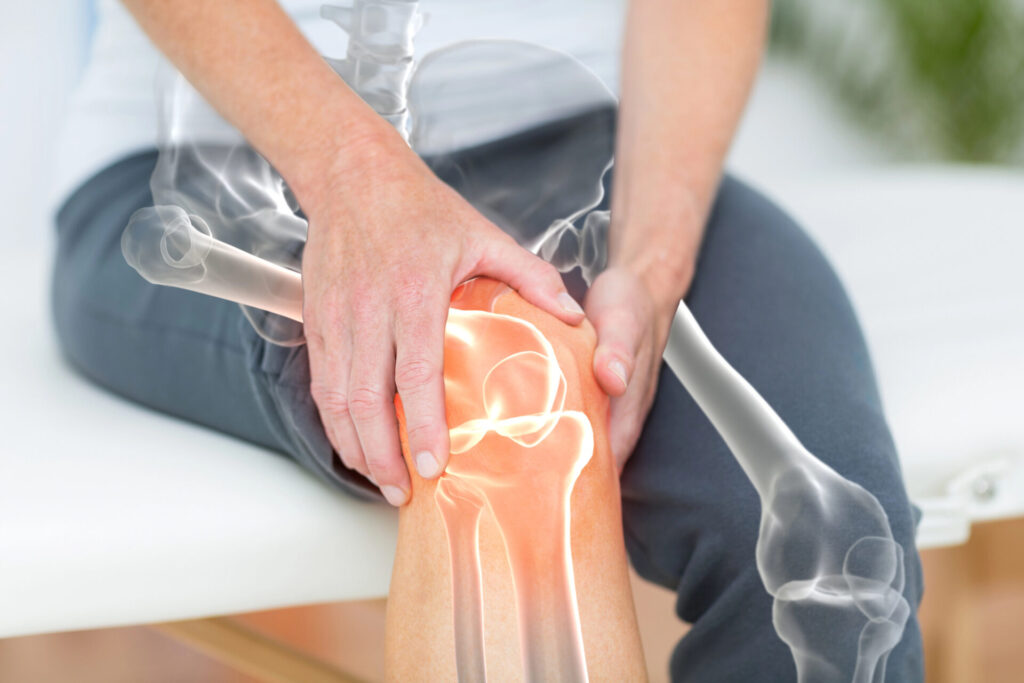Natural botanicals backed by science offer safe, effective solutions to ease inflammation, minimize pain and protect joints from damage.
For joint pain, stiffness and swelling, active patients have few alternatives. NSAIDs like celecoxib, naproxen and diclofenac are linked with an alarming range of adverse effects, including gastrointestinal bleeding, kidney damage, and increased chances of heart attack and stroke. Over-the-counter pain medications are far from benign, and they’re certainly not appropriate for daily use—a problem for active patients and athletes, who need frequent relief from aches and pains. It’s not worth the risk, when better options are available.
Evidence-based botanicals: safe, effective solutions to pain.
Joint pain in athletes is caused by a combination of factors including repetitive strain—especially in sports like running or cycling—injuries, excessive training, sudden increases in intensity without adequate prep and insufficient recovery between strenuous activities. Over time, repetitive strain, injuries and overuse can lead to joint pain and instability, accelerating cartilage degradation and heightening the risk of arthritis and chronic joint pain. Underlying conditions such as tendinitis or osteoarthritis leave joints prone to injury and pain. Other factors—insufficient hydration, nutrient deficiencies, poor sleep patterns, stress and genetic influences—exacerbate joint pain. And the simple process of aging impacts joints, making them more vulnerable.
Along with lifestyle and dietary modifications, a botanical-based protocol can give your active patients safe, effective pain relief, minus the risks of NSAIDs. Research shows bioactive compounds in certain natural supplements have antioxidant, anti-inflammatory, muscle-relaxant and analgesic properties. Most have similar mechanisms of action as synthetic drugs, reducing inflammation and easing joint pain, in some cases as well as or even better than NSAIDs. And many have been shown to protect joints from long-term damage and benefit other physiological systems. 1, 2, 3, 4 Three cornerstones of a comprehensive pain-management protocol:
Boswellia. Also known as Indian frankincense, the gum-resin extract of the Boswellia serrata tree is a common Ayurvedic remedy used for centuries to treat a range of disorders, including chronic inflammatory diseases.5, 6
Its anti-inflammatory and pain-relieving activities are attributed to several boswellic acids, including acetyl-11-keto-beta-boswellic acid (AKBA) and 11-keto-beta-boswellic acid (KBA). “These biologically active pentacyclic triterpenic acids are known to be potent regulators of the activity of specific enzymes involved in inflammation and the immune response,” says Neil Edward Levin, CCN, DANLA, co-founder and former officer of the American Nutrition Association. Boswellia extract also appears to reduce markers of oxidative stress, and its antioxidant and immunoregulatory activities are thought to play prominent roles in its therapeutic benefits.7, 8, 9, 10
Research confirms its anti-inflammatory and analgesic properties, and multiple studies point to boswellia extract as a safe, effective alternative for managing joint pain, stiffness and swelling, promoting mobility and physical function and enhancing quality of life.11, 12, 13, 14, 15, 16
In a meta-analysis of studies of osteoarthritis patients, boswellia extract relieved pain and stiffness and improved joint mobility. A randomized, double-blind, placebo-controlled trial found boswellia treatment led to a significant decrease in knee pain and swelling, increased knee flexion and greater walking distance compared to placebo. In research examining the analgesic activity of boswellia to placebo, boswellia boosted pain threshold and pain tolerance force and time. Other studies suggest boswellia extract is as effective as valdecoxib for relieving pain and swelling, and, in combination with turmeric, showed superior efficacy compared to nonsteroidal diclofenac.17, 18, 19, 20, 21, 22
Boswellia not only alleviates pain and enhances physical function, but also protects joint health. Human studies show boswellia extract can inhibit cartilage degradation, improve knee joint gap, reduce osteophytes and significantly lower levels of C-reactive protein. Some research suggests boswellia speeds recovery time and minimizes muscle soreness after exercise compared to placebo. And it works fast, with clinical trials demonstrating measurable improvements in pain scores and physical function scores as soon as five to seven days of treatment.23, 24, 25, 26, 27
Related:

Willow bark. Derived from the bark of various species of the willow trees (Salix), willow bark extract has been used for thousands of years in traditional medicine for its analgesic and anti-inflammatory benefits. Salicin, the primary constituent thought to be responsible for its therapeutic effects, is metabolized into the active form, salicylic acid, a forerunner to modern aspirin and one of the earliest examples of modern drug development from a botanical source.28, 29
Salicin works in part by inhibiting pro-inflammatory cytokines. However, willow bark contains small amounts of salicin, insufficient to produce an analgesic effect. “Other naturally occurring components such as polyphenols and flavonoids play a role in the analgesic activity of willow bark, as well as its ability to modulate inflammation,” says Levin. The combination of these constituents is thought to offer a broader mechanism of action than aspirin, without serious adverse events. Research suggests willow bark extract alleviates pain and inflammation as effectively as aspirin, but at a lower dose, presumably because of activities of these additional compounds.30, 31, 32
A number of studies point to willow bark extract as a promising long-term therapy for painful musculoskeletal disorders, with some showing willow bark extract was better than placebo for improving pain. In one review, its analgesic benefits were similar to rofecoxib in patients with low back pain. In other research, willow bark significantly decreased back and osteoarthritis pain from baseline values after only three weeks, resulting in a 46 percent reduction in pain by the end of the trial.33, 34, 35, 36
Willow bark appears to be especially effective for treating osteoarthritis, with one meta-analysis showing marked differences in pain relief and improvement in physical status compared to placebo. In another study of osteoarthritis patients, willow bark extract led to significant improvements in pain, stiffness and physical function compared to placebo, with a 14 percent reduction in pain scores after two weeks, versus a 2 percent increase in the placebo group. Overall assessments found willow bark extract to be superior to placebo. For knee and hip osteoarthritis, willow bark extract was equal to or better than conventional therapy, with no adverse effects.37, 38, 39, 40
While willow bark is generally considered safe, it’s contraindicated in patients with known aspirin allergy and in children who are at greater risk of Reye’s syndrome. It may also interact with oral anticoagulants like warfarin and should be avoided in combination with other salicylate-containing medication.41, 42, 43
Related:

White Willow Bark for Pain: 2 Supporting Studies
Ginger. Derived from the roots of the Zingiber officinale, in the same plant family as cardamom and turmeric, ginger extract has historically been used in herbal medicine to treat a variety of ailments, including arthritis, muscle pain and swelling. Its primary constituents demonstrate a wide range of biological activities, says Levine, regulating the release of compounds involved in acute responses to biological stress, modulating inflammation and easing pain.44, 45
Studies validate ginger’s anti-inflammatory activities, showing a significant decrease in C-reactive protein and pro-inflammatory genes. Additionally, gingerol, shogaol and other constituents in ginger have potent antioxidant properties, reducing oxidative stress and protecting cells from damage.46, 47, 48, 49, 50, 51
In research, ginger markedly alleviated joint pain and inflammation, relieving osteoarthritis pain better than placebo and in some cases as well as ibuprofen. A meta-analysis of randomized placebo-controlled trials found significant decreases in pain and disability in osteoarthritis patients taking ginger, compared to placebo. Another study showed ginger resulted in moderate-to-large reductions in muscle pain following exercise-induced muscle injury. In one trial, ginger combined with black pepper and curcumin found the combination of herbs improved PGE2 levels in patients with chronic knee osteoarthritis similar to naproxen. Its anti-inflammatory properties make it a valuable treatment for rheumatoid arthritis, and ginger may also inhibit rheumatoid arthritis-induced bone destruction.52, 53, 54, 55, 56, 57
In terms of safety, ginger has a long history of use as a food and medicine, with few adverse effects. Because of its antiplatelet activity, it should be used cautiously in patients taking anticoagulative drugs.
While these three ingredients are powerful individually, they’re even more potent when combined, addressing multiple pathways and exhibiting synergistic activities. “A combination of botanicals with similar but not identical properties tends to magnify the efficacy of a formula, with overlapping effects,” says Levin. “Certain botanicals supply specific compounds that affect the balance of enzymes and internally produced chemicals to help the body regulate its repair cycles properly and maximize mobility and comfort.”
Related:

REFERENCES
- Ghosh R et al. NSAIDs and Cardiovascular Diseases: Role of Reactive Oxygen Species. Oxid Med Cell Longev. 2015;2015:536962.
- Amer M et al. Use of nonsteroidal anti-inflammatory drugs in patients with cardiovascular disease: a cautionary tale. Cardiology in Review. 2010;18(4):204–212.
- Marchand S. The physiology of pain mechanisms: from the periphery to the brain. Rheum Dis Clin North Am. 2008 May;34(2):285-309.
- Nutritional Approaches for Musculoskeletal Pain and Inflammation: What the Science Says. NCCIH Clinical Digest. National Center for Complementary and Integrative Health. U.S. Department of Health and Human Services. January 2022.
- Haroyan A et al. Efficacy and safety of curcumin and its combination with boswellic acid in osteoarthritis: a comparative, randomized, double-blind, placebo-controlled study. BMC Complement Altern Med. 2018 Jan 9;18(1):7.
- Siddiqui MZ. Boswellia serrata, a potential antiinflammatory agent: an overview. Indian J Pharm Sci. 2011 May;73(3):255-61.
- Hartmann RM et al. Effect of Boswellia serrata on antioxidant status in an experimental model of colitis rats induced by acetic acid. Dig Dis Sci. 2012 Aug;57(8):2038-44.
- Efferth T, Oesch F. Anti-inflammatory and anti-cancer activities of frankincense: Targets, treatments and toxicities. Semin Cancer Biol. 2022 May;80:39-57.
- Hartmann RM et al. Boswellia serrata has beneficial anti-inflammatory and antioxidant properties in a model of experimental colitis. Phytother Res. 2014 Sep;28(9):1392-8.
- Iram F et al. Phytochemistry and potential therapeutic actions of Boswellic acids: A mini-review. Asian Pac J Trop Biomed. 2017; 7(6): 513-523.
- Du Z et al. Prospects of boswellic acids as potential pharmaceutics. Planta Med. 2015 Mar;81(4):259-71.
- Ammon HP. Boswellic acids in chronic inflammatory diseases. Planta Med. 2006;72:1100–1116.
- Abdel-Tawab M et al. Boswellia Serrata: an overall assessment of in vitro, preclinical, pharmacokinetic and clinical data. Clin Pharmacokinet. 2011;50:349–369.
- Alluri VK et al. An Anti-Inflammatory Composition of Boswellia serrata Resin Extracts Alleviates Pain and Protects Cartilage in Monoiodoacetate-Induced Osteoarthritis in Rats. Evid Based Complement Alternat Med. 2020 May 21;2020:7381625.
- Eltahir HM, Fawzy MA, Mohamed EM, Alrehany MA, Shehata AM, Abouzied MM. Antioxidant, anti-inflammatory and anti-fibrotic effects of Boswellia serrate gum resin in CCl4-induced hepatotoxicity. Exp Ther Med. 2020 Feb;19(2):1313-1321.
- Gupta PK et al. Clinical evaluation of Boswellia Serrata (Shallaki) resin in the management of Sandhivata (osteoarthritis) Ayu. 2011;32:478–482.
- Yu G et al. Effectiveness of Boswellia and Boswellia extract for osteoarthritis patients: a systematic review and meta-analysis. BMC Complement Med Ther. 2020; 20, 225.
- Kimmatkar N et al. Efficacy and tolerability of Boswellia serrata extract in treatment of osteoarthritis of knee–a randomized double blind placebo controlled trial. Phytomedicine. 2003 Jan;10(1):3-7.
- Perera PK et al. Effect of Sri Lankan traditional medicine and Ayurveda on Sandhigata Vata (osteoarthritis of knee joint). Ayu. 2014;35:411–5.
- Cameron M, Chrubasik S. Oral herbal therapies for treating osteoarthritis. Cochrane Database Syst Rev. 2014;5:CD002947.
- Prabhavathi K et al. A randomized, double blind, placebo controlled, cross over study to evaluate the analgesic activity of Boswellia serrata in healthy volunteers using mechanical pain model. Indian J Pharmacol. 2014 Sep-Oct; 46(5): 475–479.
- Maroon JC et al. Natural anti-inflammatory agents for pain relief. Surg Neurol Int. 2010; 1: 80.
- Sengupta K et al. A double blind, randomized, placebo controlled study of the efficacy and safety of 5-Loxin for treatment of osteoarthritis of the knee. Arthritis Res Ther. 2008;10(4):R85.
- Sengupta K et al. Comparative efficacy and tolerability of 5-Loxin and Aflapin against osteoarthritis of the knee: a double blind, randomized, placebo controlled clinical study. Int J Med Sci. 2010;7:366–377.
- Majeed M et al. A pilot, randomized, double‐blind, placebo‐controlled trial to assess the safety and efficacy of a novel Boswellia serrata extract in the management of osteoarthritis of the knee. Phytother Res. 2019 May; 33(5): 1457–1468.
- Salter D et al. Ten days of supplementation with a standardized Boswellia serrata extract attenuates soreness and accelerates recovery after repeated bouts of downhill running in recreationally active men. Front Sports Act Living. 2025 Jan 23;7:1488821.
- Vishal AA et al. A double blind, randomized, placebo controlled clinical study evaluates the early efficacy of aflapin in subjects with osteoarthritis of knee. Int J Med Sci. 2011;8:615–622.
- Mahdi JG. Biosynthesis and metabolism of β-d-salicin: A novel molecule that exerts biological function in humans and plants. Biotechnol Rep (Amst). 2014 Aug 28;4:73-79.
- Desborough MJR, Keeling DM. The aspirin story – from willow to wonder drug. Br J Haematol. 2017 Jun;177(5):674-683.
- Freischmidt A et al. Contribution of flavonoids and catechol to the reduction of ICAM-1 expression in endothelial cells by a standardised Willow bark extract. Phytomedicine. 2012 Feb 15;19(3-4):245-52.
- Arif H, Aggarwal S. Salicylic Acid (Aspirin) [Updated 2023 Jul 5]. In: StatPearls [Internet]. Treasure Island (FL): StatPearls Publishing; 2025 Jan-.
- Biegert C et al. Efficacy and Safety of Willow Bark Extract in the Treatment of Osteoarthritis and Rheumatoid Arthritis: Results of 2 Randomized Double-Blind Controlled Trials. J. Rheumatol. 2004;31:2121–2130.
- Gagnier JJ et al. Herbal medicine for low back pain. Cochrane Database Syst Rev. 2006 Apr 19;(2):CD004504.
- Chrubasik S et al. Treatment of low back pain with a herbal or synthetic anti-rheumatic: a randomized controlled study. Willow bark extract for low back pain. Rheumatology (Oxford). 2001 Dec;40(12):1388-93.
- Vlachojannis JE et al. A systematic review on the effectiveness of willow bark for musculoskeletal pain. Phytother Res. 2009 Jul;23(7):897-900.
- Uehleke B et al. Willow bark extract STW 33-I in the long-term treatment of outpatients with rheumatic pain mainly osteoarthritis or back pain. Phytomedicine. 2013 Aug 15;20(11):980-4.
- Setty AR, Sigal LH. Herbal medications commonly used in the practice of rheumatology: mechanisms of action, efficacy, and side effects. Semin Arthritis Rheum. 2005 Jun;34(6):773-84.
- Lin CR et al. Willow Bark (Salix spp.) Used for Pain Relief in Arthritis: A Meta-Analysis of Randomized Controlled Trials. Life (Basel). 2023 Oct 14;13(10):2058.
- Schmid B et al. Efficacy and tolerability of a standardized willow bark extract in patients with osteoarthritis: randomized placebo-controlled, double blind clinical trial. Phytother Res. 2001 Jun;15(4):344-50.
- Beer AM, Wegener T. Willow bark extract (Salicis cortex) for gonarthrosis and coxarthrosis–results of a cohort study with a control group. Phytomedicine. 2008 Nov;15(11):907-13.
- Vlachojannis J et al. Willow species and aspirin: different mechanism of actions. Phytother Res. 2011 Jul;25(7):1102-4.
- Shara M, Stohs SJ. Efficacy and Safety of White Willow Bark (Salix Alba) Extracts. Phytother. Res. 2015;29:1112–1116.
- Oketch-Rabah HA et al. United States Pharmacopeia Safety Review of Willow Bark. Planta Med. 2019;85:1192–1202.
- Jahromi B et al. Herbal Medicine for Pain Management: Efficacy and Drug Interactions. Pharmaceutics. 2021 Feb 11;13(2):251.
- Fetrow CW, Avila JR. The Complete Guide to Herbal Medicines. Simon and Schuster; New York, NY, USA: 2000.
- Mao QQ et al. Bioactive Compounds and Bioactivities of Ginger (Zingiber officinale Roscoe). Foods. 2019 May 30;8(6):185.
- Unuofin JO et al. Ginger from Farmyard to Town: Nutritional and Pharmacological Applications. Front. Pharmacol. 2021;12:779352.
- Gopalsamy B et al. Antiallodynic and antihyperalgesic activities of zerumbone via the suppression of IL-1β, IL-6, and TNF-α in a mouse model of neuropathic pain. J Pain Res. 2017;10:2605–2619.
- Kopustinskiene DM et al. Natural Herbal Non-Opioid Topical Pain Relievers-Comparison with Traditional Therapy. Pharmaceutics. 2022 Nov 29;14(12):2648.
- van Breemen RB et al. Cyclooxygenase-2 inhibitors in ginger (Zingiber officinale). Fitoterapia. 2011;82:38–43.
- Terry R et al. The use of ginger (Zingiber officinale) for the treatment of pain: a systematic review of clinical trials. Pain Med 12(12):1808-1818, 2011.
- Bliddal H et al. A randomized, placebo-controlled, cross-over study of ginger extracts and ibuprofen in osteoarthritis. Osteoarthritis Cartilage. 2000 Jan;8(1):9-12.
- Altman RD, Marcussen KC. Effects of a ginger extract on knee pain in patients with osteoarthritis. Arthritis Rheum. 2001 Nov;44(11):2531-8.
- Bartels EM et al. Efficacy and safety of ginger in osteoarthritis patients: a meta-analysis of randomized placebo-controlled trials. Osteoarthritis Cartilage. 2015 Jan;23(1):13-21.
- Black CD et al. Ginger (Zingiber officinale) reduces muscle pain caused by eccentric exercise. J Pain. 2010 Sep;11(9):894-903.
- Heidari-Beni M et al. Herbal formulation “turmeric extract, black pepper, and ginger” versus Naproxen for chronic knee osteoarthritis: A randomized, double-blind, controlled clinical trial. Phytother Res. 2020 Aug;34(8):2067-2073.
- Al-Nahain A et al. Zingiber officinale: A Potential Plant against Rheumatoid Arthritis. Arthritis. 2014;2014:159089.





